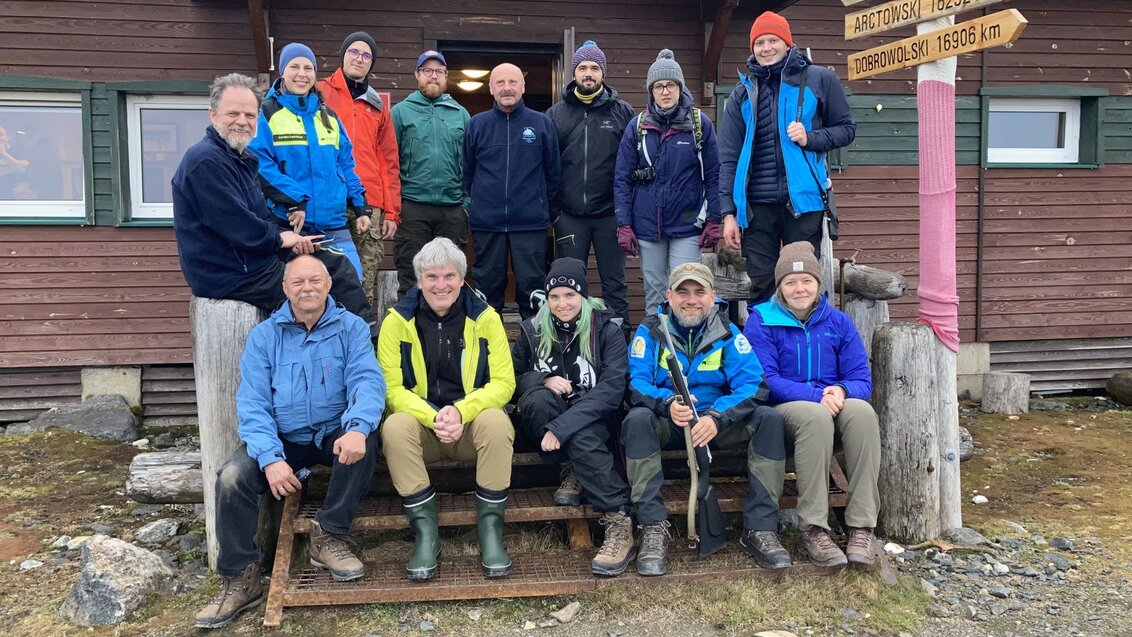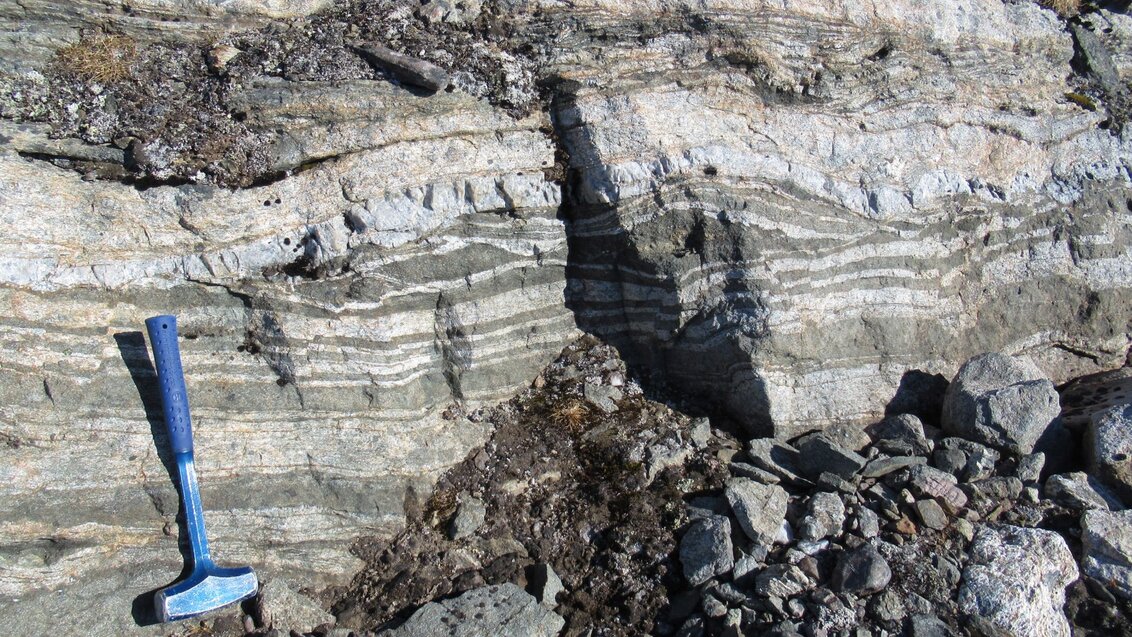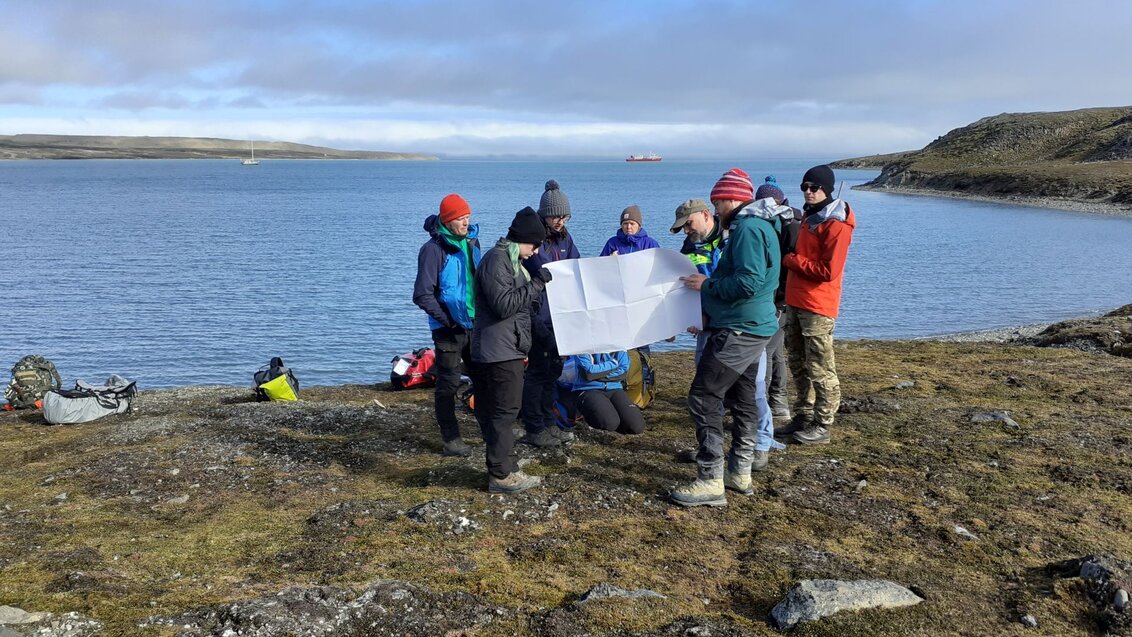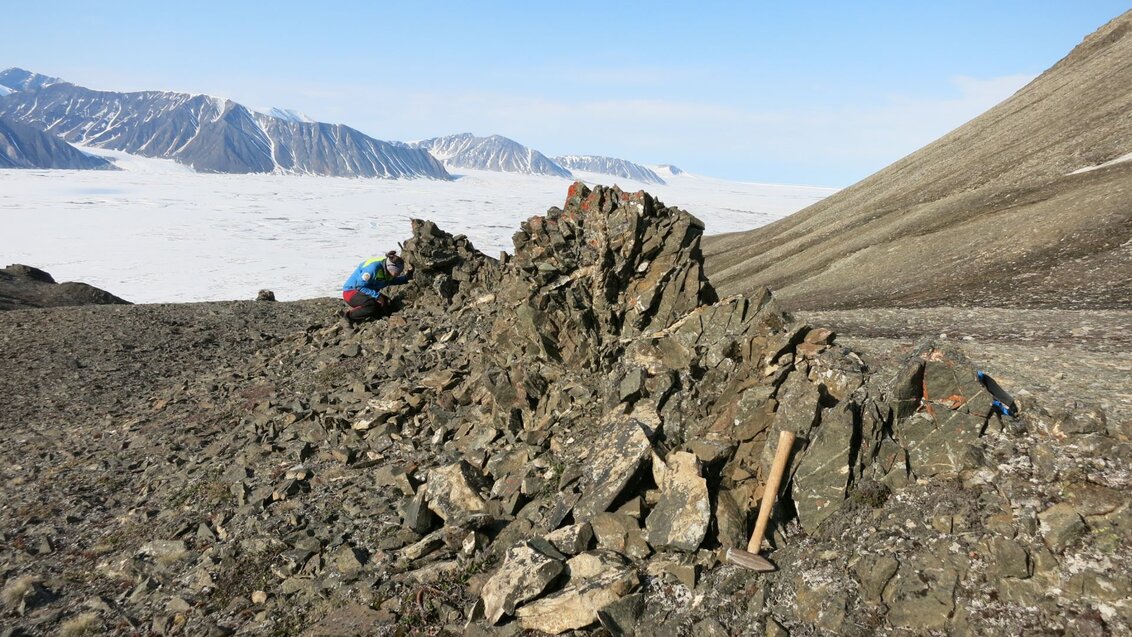Scientists can discover these particular forms because the previously subducted oceanic plate fragments lift up to the surface during orogeny. Orogens, however, keep eroding, revealing metamorphic rocks, i.e. formed exactly under the conditions of extreme pressure and temperature. The members of the Orogen Dynamics Team search for those even in the most harsh and secluded areas of the Arctic: in Spitsbergen, Ellesmere Island, and Greenland.
Mysterious eclogites
When geologists stumble upon an interesting specimen, they immediately subject it to meticulous lab tests. The process of such investigations is illustrated by the example of a discovery made in the Scandinavian Mountains by Michał Bakuła (Dr, Polish Academy of Sciences [PAN]) and Christopher Barnes (Dr, PAN) then Prof. Majka’s doctoral students at the AGH UST. They had encountered rocks that they have classified as eclogites. This type of rock is characterised by its ability to accumulate large volumes of hydrous minerals, i.e. containing water in its chemical composition. However, in this case, the fluid has completely evaporated at some point.
The researchers have also noted that the rock has undergone brittle deformation, which normally should not occur at such depths under a relatively high temperature, that is, in conditions in which the rocks show elastic properties. ‘At the beginning, we haven’t ruled out the possibility that it could have occurred later, during the unearthing. However, using X-ray microtomography, we’ve determined that the fractures had been filled with high-pressure phases. This means that the fractures must have originated under extremely high pressure and considerably high temperature, and therefore very deep underground’, says the leader of the Orogen Dynamics Team.
Ultimately, the geologists have come to the conclusion that the dehydrated minerals trapped in the rock were lawsonite and glaucophane. When, after subduction, it has been subjected to high temperature, the minerals started to release water. This caused an increase in the pressure of the fluid inside the rock and, as a result, its rapid release (hydrofracturing) and blowing apart.
‘We have probably come across a hypocentre of a massive seismic event or at least a spot very close to one. A similar phenomenon caused an earthquake in Chiapas, Mexico, in 2017, where the hypocentre of the quake was also located in the area of a subducting plate. Normally, we cannot observe such events, unlike near the famous San Andreas fault, where hypocentres occur quite shallow. For me, this is the most exciting discovery of the last three years‘, highlights Professor Majka.
The origins of Orogen Dynamics Team
The origins of the Orogen Dynamics Team can be traced back to 2015, when Professor Majka created the team at the AGH UST, implementing a SONATA BIS grant. The geologist had already acquired substantial scientific experience. He graduated from the AGH University of Science and Technology, where he could carry out his research in the Arctic side by side with Professor Maciej Manecki and Dr (Eng.) Jerzy Czerny, and under the supervision of Professor Andrzej Manecki. Having defended his doctoral dissertation, he was invited to work at the Slovak Academy of Sciences, where his research focus was directed primarily on the Carpathians.
Later, he worked at the Uppsala University. ‘This was a return to the Arctic because the person who invited me there was Professor David Gee – a living legend of Arctic research. I learned from him and other people I met. Around 2014, time and opportunities presented themselves to set my foot back at my Alma Mater and build this team‘, recounts Professor Majka.
At first, the group employed only a few people; now, there are more than a dozen – affiliated not only to the AGH University of Science and Technology, but also to other universities and research institutions. An important part of the team is its continued relationship with the Uppsala University, which, in addition to the AGH UST, is another place of work of Professor Majka and – as he himself claims – an outpost of Orogen Dynamics Team. All doctoral students who belong to the team receive double diplomas, and independent scholars obtain the status of a visiting researcher in Sweden. The Swedish law grants the former the privilege of supervising MA students, which constitutes a valuable asset to their academic CVs.




 Pre-election meeting with a candidate for the position of rector
Pre-election meeting with a candidate for the position of rector  Agreement on cooperation with OPAL-RT
Agreement on cooperation with OPAL-RT  Krakow DIANA Accelerator consortium members with an agreement
Krakow DIANA Accelerator consortium members with an agreement  Meeting with the Consul General of Germany
Meeting with the Consul General of Germany  More Academic Sports Championships finals with medals for our students
More Academic Sports Championships finals with medals for our students  Bronze for our swimmers at Academic Championships
Bronze for our swimmers at Academic Championships  Smart mountains. AGH University scholar develops an intelligent mountain rescue aid system
Smart mountains. AGH University scholar develops an intelligent mountain rescue aid system